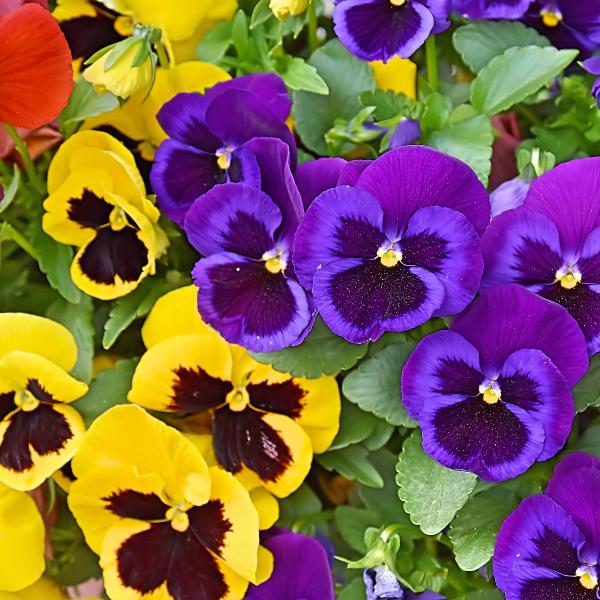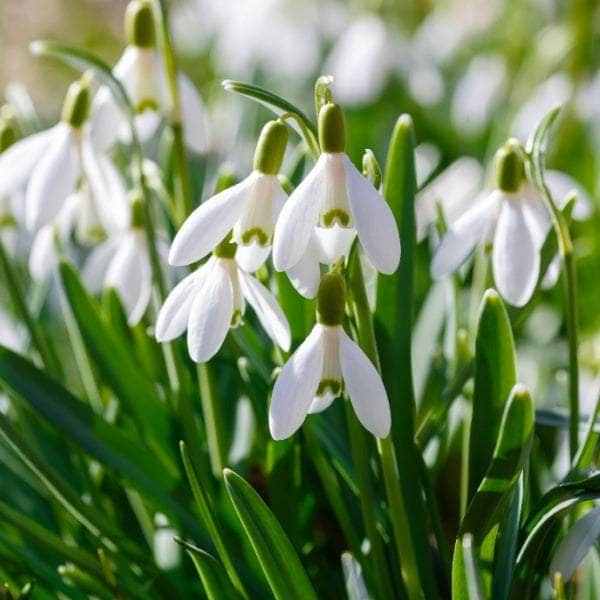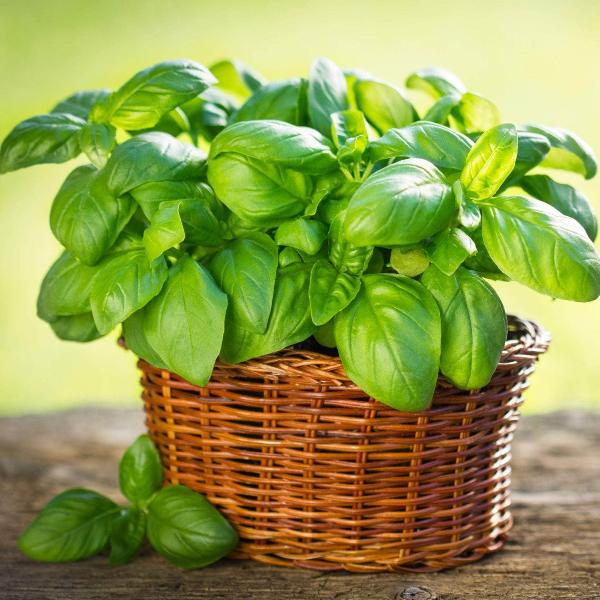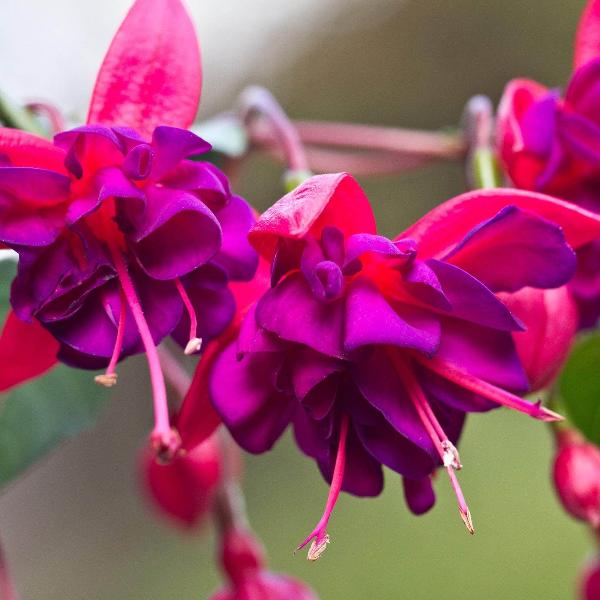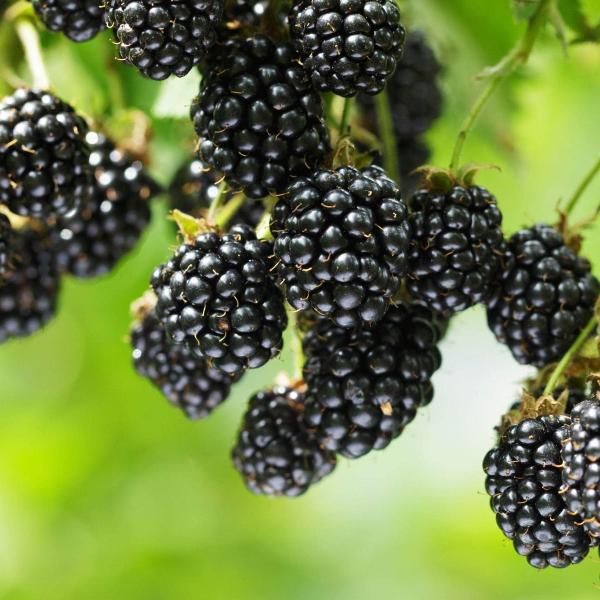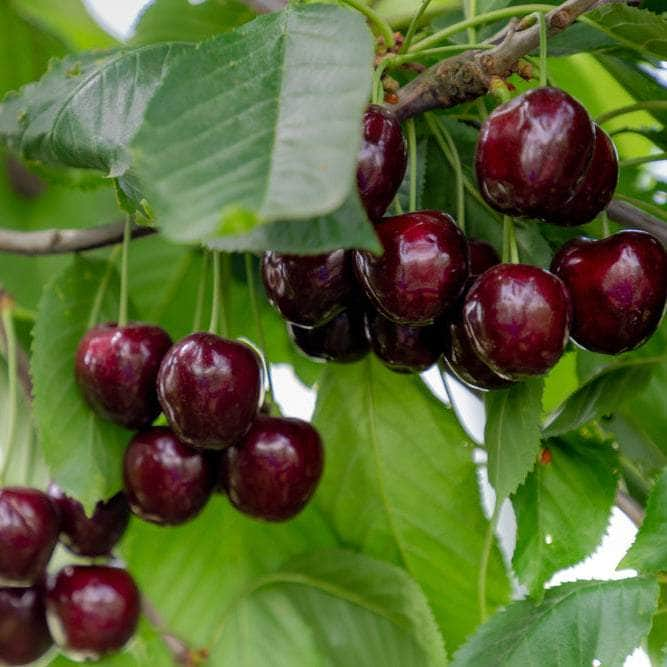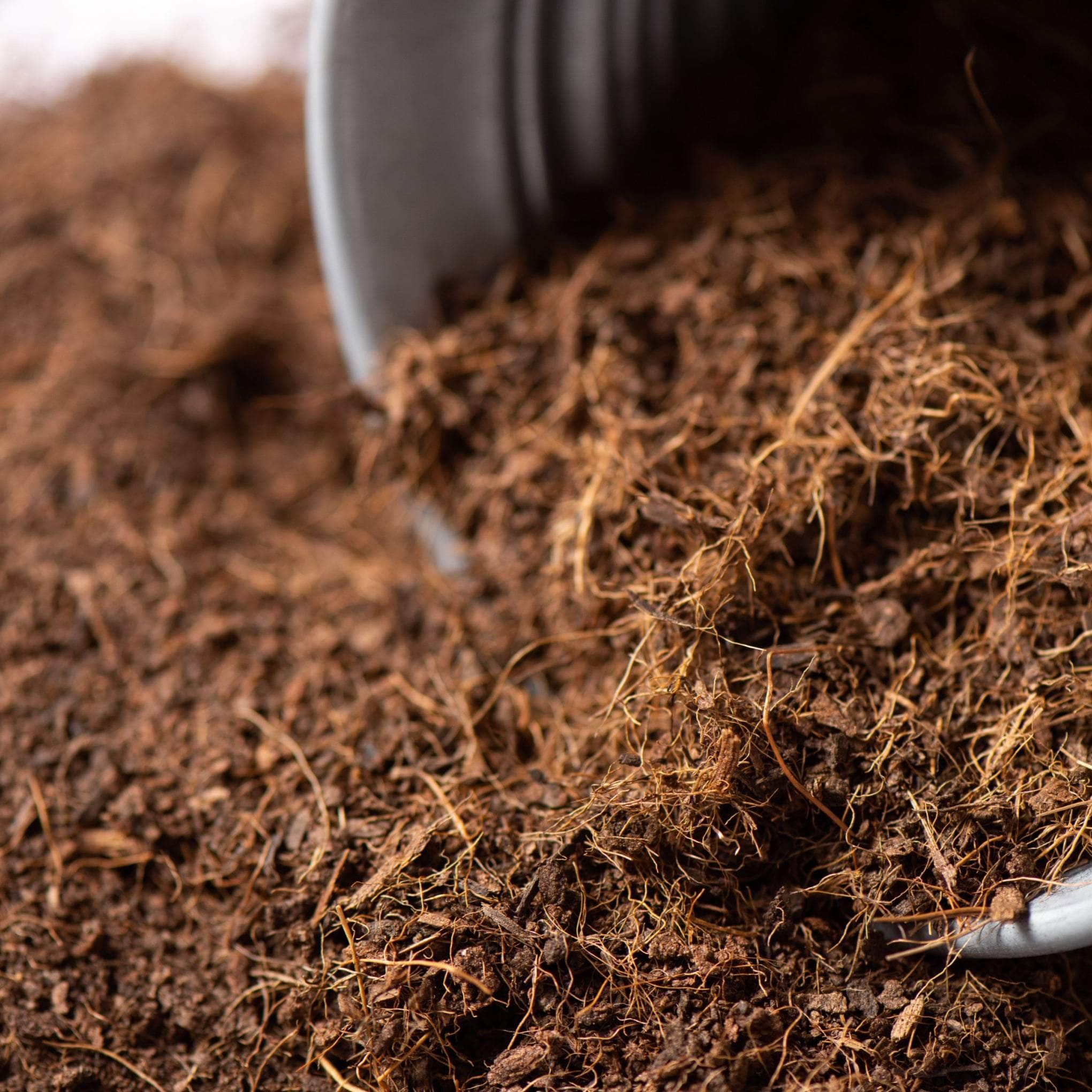The Ultimate Guide to Growing and Caring for Stocks
Welcome to our comprehensive guide on growing and caring for the enchanting stocks. These vibrant blooms, with their wide range of colours and double blooms, are a delightful addition to any garden bed. Whether you're a seasoned gardener or a green-fingered novice, this guide will provide you with all the essential tips and tricks to ensure your stocks thrive.
We'll delve into the nitty-gritty of planting and caring for these cool weather-loving plants, and tackle common pests and diseases that could hinder their growth. So, whether you're looking to create a stunning flower border, or simply want to add a splash of colour to your window box, join us as we explore the captivating world of stocks. Let's get started!
Understanding Stocks: An Overview

Dive into the world of stocks, a gardener's delight that brings a burst of colour and fragrance to any garden. These flowers, known for their range of colours and double blooms, are a staple in many cottage gardens. They thrive in cool weather and prefer full sun, making them a versatile addition to your outdoor space. Let's explore the fascinating world of stocks and understand their unique characteristics.
What are Stocks?
Stocks, also scientifically referred to as Matthiola incana, are a gardener's dream - brimming with colourful cluster blooms and adorning garden beds with their spiky stems. These beauties, whether grown as annuals, biennials, or short-lived perennials in USDA zones 7-10, exhibit a fascinating life cycle. While the weather-dependent blooming patterns keep gardeners on their toes, the scented grace they bring to cottage gardens makes them a popular choice.
Often considered the harbingers of deep affection throughout history, stocks have not just had an aesthetic appeal but a poignant significance. Diverse in purpose, they're utilised to create vibrant bouquets, to craft stunning centrepieces, or even as edible garnishes, making the enchanting stock flower a versatile player in different creative arenas.
Renowned not just for their visual appeal but for their unique clove-like scent, the stock plant offers an olfactory experience as well. This two-fold charm allows them to be alluring to pollinators like bees and butterflies, reinforcing the delicate balance of a thriving ecosystem.
Where and When to Plant Stocks

Understanding where and when to plant stock flowers is crucial for their successful growth. These flowers thrive in full sun to part shade and prefer cool weather conditions.
Choosing the right location in your garden, where they can enjoy the morning sun, and timing your planting after the last frost, can significantly enhance their growth and blooming.
Choosing the Perfect Location for Stocks
Choosing a perfect location for your stocks is an essential step not to be overlooked. These beauties do their absolute best in locations with full sun to part shade. If you're planting in your garden bed, aim for spots that receive plentiful morning sun. This is when stocks are at their happiest, basking in the indirect, soft light of the early hours.
Keeping them in a part shade will shield them from midday harshness and ensure they receive the right balance of light. With these pointers in mind, your stocks are well on their way to thriving in their chosen perfect location.
The Ideal Time to Plant Stocks
Knowing when to plant stocks is key to ensure their healthy growth and subsequent blooming. The ideal time to sow these seeds is the beginning of summer. Ensure the temperatures are stable around 18-20ºC which is optimal for germinating these particular seeds within a ten-day period.
Additionally, it's crucial to plant stock flowers post the last frost if you're planning on placing them directly in your garden bed. This ensures the flowers aren't hit by a sudden frost that could severely affect their growth journey. For those in cooler regions, it's recommended to seed them in an unheated conservatory, glasshouse, or cold frame in the latter part of summer, to protect them from the harsh winter.
How to Grow and Care for Stock Flowers

Growing and caring for stocks can be a rewarding experience, especially when you see the vibrant blooms and smell their sweet fragrance. This section will guide you through the process, from planting to nurturing these beautiful flowers.
Whether you're a seasoned gardener or a beginner, the grow tips and techniques shared here will help you cultivate a thriving stock flower garden. Let's dive into the world of stocks and learn how to grow and care for them effectively.
Planting Stocks: A Step-by-Step Guide
Start with the Seeds: Begin the planting process at the beginning of summer. Scatter seed thinly on sowing compost surface and lightly cover them with sieved compost or vermiculite for better germination.
Germination: Place your seed tray somewhere with access to sunlight, maintaining an ideal temperature of 18-20ºC. Germination should occur in approximately 10 days.
Transfer Seedlings: Once two true leaves appear on the seedlings, transfer them to pots to further their growth.
Final Planting: In early autumn, plant your matured stocks in their final flowering location for the next year.
Caring for Stocks: Essential Tips
Once you've planted your stocks using the appropriate guide, properly caring for them is key to ensure a healthy and vibrant bloom. Here are some essential tips for caring for your naturally captivating stocks:
Consistent Moisture: Stocks crave consistent soil moisture. Make sure your flowers never go dry. This helps in discouraging wilting and enables the plant to grow stress-free.
Support Your Plant: Consider using a trellis or any other support for your taller stock varieties. Regular deadheading – which involves removing spent blooms – can motivate new growth and prolong blooming.
Watch for Pests and Diseases: As much as we love growing plants, some unwelcome guests may also find them inviting. Stay vigilant for potential aphids, thrips and fungal diseases which may endanger your stocks.
A healthy stock plant not only graces your garden with beautiful blooms but can also serve as a great cut flower that brings that garden freshness within your walls. By putting these simple yet essential tips in action, rest assured your stocks will thrive and continue their beautiful spectacle in your garden.
Common Pests and Diseases in Stocks

Growing and caring for stocks can be a rewarding experience, but it's not without its challenges. One of the most common hurdles gardeners face is dealing with pests and diseases. These can range from tiny insects that nibble on leaves to fungal infections that can cause serious damage. In this section, we'll delve into the common pests and diseases that affect stocks, and how to identify and treat them.
Identifying Common Pests in Stocks
In the world of gardening, pests pose a significant challenge to the successful cultivation of stocks, often proving to be a gardener's most formidable adversary. The most common pests found on stocks include aphids, flea beetles, spider mites, and whiteflies. Undeniably, these are the main culprits you should be on the lookout for. Unfortunately, each of these pests brings with it a barrage of symptoms like yellowing leaves, brown spots, and even wilting plants.
Aphids are tiny, soft-bodied insects that suck sap, frequently causing attractive leaves to twist, distort, and drop. Often, they leave behind a sticky residue that can host sooty mould. Flea beetles, on the other hand, can be easily identified by the numerous small holes they create on the leaves, which gives the appearance of the foliage being peppered with tiny bullet holes.
Early detection can be critical in effectively handling these infestations and preventing significant damage to your stocks. The more you know about these pests, the better equipped you'll be to spot and tackle them proactively.
Recognising and Treating Common Diseases in Stocks
Dealing with diseases in stocks can be a mission if not detected and managed early. In many cases, spotting the ailment accurately can make all the difference. One primary suspect is the infamous leaf spot, often seen as intimidating yellow or brown spots on leaves, sometimes causing the unsightly wilting of plants.
Gray mould, another common disease in stocks, is characterised by its trademark fuzzy grey spores often abiding on damp leaves. These nuisances also contribute to the unappealing yellowing of leaves.
Treating these diseases often involves the careful removal of affected plants, ensuring the disease doesn't spread to healthy plants. It's paramount that the gardener maintains a clean garden environment, taking care not to overwater, and enhancing the plant's living conditions. Prevention they say, is better than a cure.
How to Get Stock Flowers to Bloom

Getting your stocks to bloom beautifully can be a rewarding experience. It's not just about planting and watering them, but understanding their unique needs and growth cycle.
In this section, we'll delve into the art of coaxing these fragrant flowers into full bloom. We'll explore the factors that influence their blooming and how you can manipulate these to your advantage.
Understanding the Blooming Cycle of Stocks
Stocks, known for their double bloom, follow a distinct blooming cycle. Generally, these flowers shine the brightest during the early summer months, with their blooms appearing in clusters on robust stalks. Their blooming phase tends to conclude once warmer weather sets in, marking their prominence as a seasonal delight.
However, understanding the bloom months and the nature of a stock flower bloom can enhance your gardening experience. The timely bloom of these flowers signifies the beginning of summer, blanketing gardens with hues pink, yellow, red, and more.
Stay tuned to our next section, where we will divulge an assortment of tips on how to encourage more blooms. This will guarantee continuous bursts of colour and fragrance in your garden throughout the pleasant early summer days.
Tips to Encourage More Blooms
Here are few beneficial tips to encourage more blooms in your stocks:
Sunlight: Ensure to provide 2-3 hours of indirect sunlight, ideally in the morning, for healthy budding.
Soil Requirements: Make use of a rich and well-drained soil for planting your stocks.
Consistent Moisture: Don't let the soil dry out. Keep the soil moist which can help in root development and in turn may stimulate more blooming.
Deadheading: This can promote new growth and possibly more blooms. So, after petals wilt, removing spent blooms can be beneficial.
Avoid Extreme Heat: Do remember that stocks can be temperature sensitive, and prefer cooler weather.
Keep in mind that the bloom months for stocks typically fall in early summer. Thus, by adequately nurturing them during this period, you can further increase their chances to bloom.
The Benefits of Stocks

Stocks are a gardener's delight, offering a myriad of benefits that extend beyond their aesthetic appeal. These vibrant blooms not only enhance the visual appeal of your garden but also serve a functional role in the ecosystem. Let's delve into the advantages of cultivating these charming flowers.
Their versatility as a cut flower and a cottage garden plant makes them a valuable addition to any garden. They effortlessly transform your garden into a picturesque landscape, serving as an attractive flower border while also attracting a variety of pollinators.
Why Choose Stocks: The Benefits
Stocks are a remarkable addition to any garden due to their vibrant hues and distinctive clove-like scent. Not only do they add a splash of colour to your garden landscape, but they also serve practical purposes. Their reputation as one of the finest cut flowers adds value to their cultivation, making them an ideal choice for flower arrangements.
These flowers can transform a common landscape into a charming cottage garden. Their unique architecture makes them an impressive border plant that can beautifully outline your property. Moreover, the stock is a hardy breed, tolerant to various weather conditions, making it less tedious to care for compared to other flowers.
Stocks and Pollinators: A Perfect Match
Growing stocks in your garden isn't just about enjoying their vibrant blossoms and enticing fragrance, it's also about becoming part of nature’s extraordinary chain of pollination. These garden plants have a vital role, often underestimated, in boosting the health of our ecosystem by acting as an essential food hub for pollinators.
In the heart of their colourful petals, they store generous deposits of nectar and pollen. It's worth noting that these particular elements don’t just attract your average honeybee; they are considered a feast for a variety of other pollinators like butterflies or even nocturnal ones like bats and moths.
The only commitment from your side as a gardener is to provide the stock flowers a suitable place in your flower border. You get to enjoy their beauty, and in return, your garden becomes a sanctuary for these beneficial pollinators. It's a perfect symbiosis that further endorses the impressive benefits of stock flowers.
Companion Plants for Stock Flowers

When it comes to creating a visually appealing and harmonious garden, the choice of companion plants for your stock flowers is crucial. The right companions can not only enhance the aesthetic appeal of your garden but also promote healthier growth for all plants involved.
In a cottage garden setting, stock flowers can be paired with a variety of garden plants that share similar growing conditions. This not only creates a stunning visual effect but also ensures that each plant thrives.
Choosing the Perfect Companions for Stock Flowers
Choosing apt companion plants for your stock flowers can enhance their beauty and help create a charming floral ensemble. Primarily, you should focus on other classic cottage garden plants that thrive in cool temperatures and well-drained soil.
Snapdragons (Antirrhinum): These tall, vibrant flowers can create wonderful contrast with the dense clusters of stock flowers.
Sweet Alyssum (Lobularia maritima): This ground-cover plant can provide a lovely white, carpet-like backdrop for the colourful stock flowers, enhancing their distinctiveness.
These suggested companion plants will not only ensure that your garden, window box, or flower border has a striking visual appeal, but also aid in creating a delightful atmosphere throughout your garden space.
Embrace the Beauty of Stock Flowers in Your Garden

In conclusion, the beauty and versatility of stock flowers make them a worthy addition to any garden. Their wide range of colours, delightful fragrance, and ability to thrive in full sun to part shade conditions make them a favourite among gardeners. Whether you're looking to add a pop of colour to your garden, create a stunning flower border, or simply enjoy their sweet scent, stock flowers are an excellent choice.
Remember, these flowers prefer cool weather and well-drained soil. Regular watering, good air circulation, and proper plant spacing can help keep them healthy and vibrant. With the right care, you can enjoy their beautiful blooms from early summer until the first frost.
Embrace the beauty of stock flowers in your garden today. With their double blooms and captivating fragrance, they're sure to transform your outdoor space into a colourful, aromatic haven. Happy gardening!




